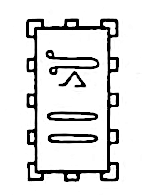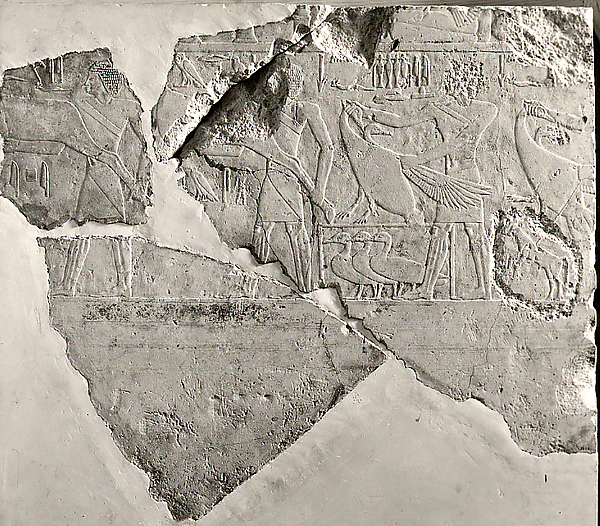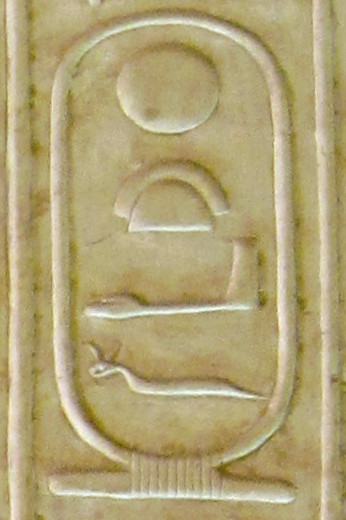|
El-Lisht
Lisht or el-Lisht () is an Egyptian village located south of Cairo. It is the site of Middle Kingdom royal and elite burials, including two pyramids built by Amenemhat I and Senusret I. The two main pyramids were surrounded by smaller pyramids of members of the royal family, and many mastaba tombs of high officials and their family members. They were constructed throughout the Twelfth and Thirteenth Dynasties. The site is also known for the tomb of Senebtisi, found undisturbed and from which a set of jewelry has been recovered. The pyramid complex of Senusret I is the best preserved from this period. The coffins in the tomb of Sesenebnef present the earliest versions of the Book of the Dead. Overview The ancient Egyptian site of el-Lisht can be found on the west bank of the Nile River, around 65 km south of the city of Cairo. It is a Twelfth Dynasty necropolis, close to the city of Itj-Tawy from which the modern village assumably (given the proposed older form Al-Isht) ... [...More Info...] [...Related Items...] OR: [Wikipedia] [Google] [Baidu] |
Amenemhat I
:''See Amenemhat (other), Amenemhat, for other individuals with this name.'' Amenemhat I (Egyptian language, Ancient Egyptian: ''Ỉmn-m-ḥꜣt'' meaning 'Amun is at the forefront'), also known as Amenemhet I, was a pharaoh of ancient Egypt and the first king of the Twelfth Dynasty of Egypt, Twelfth Dynasty of the Middle Kingdom of Egypt, Middle Kingdom. Amenemhat I was probably the same as the vizier named Amenemhat who led an expedition to Wadi Hammamat under his predecessor Mentuhotep IV, and possibly overthrew him from power. Scholars differ as to whether Mentuhotep IV was killed by Amenemhat I, but there is no independent evidence to suggest this and there may even have been a period of co-regency between their reigns.E. Hornung, ''History of Ancient Egypt'', 1999 p.50 Amenemhat I was not of royal lineage, born to Senusret and Nefert who were possibly related to the nomarchial family of Elephantine. The composition of some literary works (the ''Prophecy of Neferti ... [...More Info...] [...Related Items...] OR: [Wikipedia] [Google] [Baidu] |
Amenemhet I
:''See Amenemhat, for other individuals with this name.'' Amenemhat I (Ancient Egyptian: ''Ỉmn-m-ḥꜣt'' meaning 'Amun is at the forefront'), also known as Amenemhet I, was a pharaoh of ancient Egypt and the first king of the Twelfth Dynasty of the Middle Kingdom. Amenemhat I was probably the same as the vizier named Amenemhat who led an expedition to Wadi Hammamat under his predecessor Mentuhotep IV, and possibly overthrew him from power. Scholars differ as to whether Mentuhotep IV was killed by Amenemhat I, but there is no independent evidence to suggest this and there may even have been a period of co-regency between their reigns.E. Hornung, ''History of Ancient Egypt'', 1999 p.50 Amenemhat I was not of royal lineage, born to Senusret and Nefert who were possibly related to the nomarchial family of Elephantine. The composition of some literary works (the ''Prophecy of Neferti'', the ''Instructions of Amenemhat''M. Lichtheim, ''Ancient Egyptian Literature'', 1973 p.135) ... [...More Info...] [...Related Items...] OR: [Wikipedia] [Google] [Baidu] |
Itj-tawy
Itjtawy or It-Towy ("Seizer of the Two Lands"), also known by its full name Amenemhat-itjtawy ("Amenemhat seizes the Two Lands"), was an ancient Egyptian royal city established by pharaoh Amenemhat I. As yet, Itjtawy’s exact location remains unidentified. Circumstantial evidence suggests that the site lies beneath cultivated fields east of the pyramids of Amenemhat I and Senusret I at Lisht. There is evidence that Amenemhat, the founder of the 12th Dynasty who ruled approximately 1991 to 1962 BC, established Itjtawy during his regnal year 20, replacing Thebes as the capital of Egypt. However, the earliest known mention of Itjtawy is dated to the pharaoh’s regnal year 30 (ten years later its presumed foundation), and is represented by the double-dated stela CG 20516 now in Cairo Museum. Relocation of the capital may have been a strategic move. The site for Itjtawy – hundreds of miles down the Nile from Thebes – may have been chosen for its proximity to the source of A ... [...More Info...] [...Related Items...] OR: [Wikipedia] [Google] [Baidu] |
Rehuerdjersen
Rehuerdjersen was an ancient Egyptian treasurer (Ancient Egypt), treasurer who held this office under the Twelfth Dynasty of Egypt, 12th Dynasty pharaoh Amenemhat I. Rehuerdjersen is mainly known from his tomb at el-Lisht (tomb no. 384), close to the pyramid of Amenemhat I. His mastaba was heavily damaged, but reliefs with his name and several titles were found. From the position of the mastaba it has been argued that Rehuerdjersen and Amenemhat I were contemporaries. In his tomb a number of important titles are preserved: ''royal sealer, sole friend, spokesman of every Pe-ite, controller of every kilt'' and ''overseer of the double gold house''Arnold: ''Middle Kingdom Tomb Architecture at Lisht'', 64 On a stela he also has the title ''Iry-pat, member of the elite, foremost of action'' (Haty-a) and ''Overseer of the treasuries''. The mastaba lies on the west side of the king's pyramid, that is behind the pyramid. It was already excavated in 1894–95 by a French expedition unde ... [...More Info...] [...Related Items...] OR: [Wikipedia] [Google] [Baidu] |
Limestone
Limestone is a type of carbonate rock, carbonate sedimentary rock which is the main source of the material Lime (material), lime. It is composed mostly of the minerals calcite and aragonite, which are different Polymorphism (materials science), crystal forms of calcium carbonate . Limestone forms when these minerals Precipitation (chemistry), precipitate out of water containing dissolved calcium. This can take place through both biological and nonbiological processes, though biological processes, such as the accumulation of corals and shells in the sea, have likely been more important for the last 540 million years. Limestone often contains fossils which provide scientists with information on ancient environments and on the evolution of life. About 20% to 25% of sedimentary rock is carbonate rock, and most of this is limestone. The remaining carbonate rock is mostly Dolomite (rock), dolomite, a closely related rock, which contains a high percentage of the mineral Dolomite (mine ... [...More Info...] [...Related Items...] OR: [Wikipedia] [Google] [Baidu] |
Pepi I
Pepi I Meryre (also Pepy I; died 2283 BC) was an ancient Egyptian pharaoh, king, third king of the Sixth Dynasty of Egypt, who ruled for over 40 years from the 24th to the 23rd century BC, toward the end of the Old Kingdom of Egypt, Old Kingdom period. He was the son of Teti, the founder of the dynasty, and ascended the throne only after the brief intervening reign of the shadowy Userkare. His mother was Iput, who may have been a daughter of Unas, the final ruler of the preceding Fifth Dynasty of Egypt, Fifth Dynasty. Pepi I, who had at least six consorts, was succeeded by his son Merenre Nemtyemsaf I, with whom he may have shared power in a coregency at the very end of his reign. Pepi II, Pepi II Neferkare, who might also have been Pepi I's son, succeeded Merenre. Several difficulties accumulated during Pepi's reign, beginning with the possible murder of his father and the ensuing reign of Userkare. Later, probably after his twentieth year of reign, Pep ... [...More Info...] [...Related Items...] OR: [Wikipedia] [Google] [Baidu] |
Pepi II
Pepi II Neferkare ( 2284 BC – 2214 BC) was a pharaoh, king of the Sixth Dynasty of Egypt, Sixth Dynasty in Egypt's Old Kingdom. His second name, Neferkare (''Nefer-ka-Re''), means "Beautiful is the Ka (Egyptian soul), Ka of Re (Egyptian religion), Re". He succeeded to the throne at age six, after the death of Merenre Nemtyemsaf I, Nemtyemsaf I. Pepi II's reign marked a sharp decline of the Old Kingdom. As the power of the nomarchs grew, the power of the king declined. With no dominant central power, local nobles began raiding each other's territories and the Old Kingdom came to an end within a couple of years after the end of Pepi II's reign. This led to the First Intermediate Period of Egypt which lasted from the Seventh Dynasty of Egypt to the Tenth Dynasty of Egypt. He is thought to have been the world's longest-reigning monarch. According to the ancient historian Manetho (4th century BCE), he reigned for 94 years, and according to the Turin King List (13th century BCE), fo ... [...More Info...] [...Related Items...] OR: [Wikipedia] [Google] [Baidu] |
Unas
Unas or Wenis, also spelled Unis (, Hellenization, hellenized form Oenas or Onnos; died 2345), was a pharaoh, king, the ninth and last ruler of the Fifth Dynasty of Egypt during the Old Kingdom of Egypt, Old Kingdom. Unas reigned for 15 to 30 years in the mid-24th century BC (c. 2345–2315 BC), succeeding Djedkare Isesi, who might have been his father. Little is known of Unas' activities during his reign, which was a time of economic decline. Egypt maintained trade relations with the Levantine coast and Nubia, and military action may have taken place in southern Canaan. The growth and decentralization of the administration in conjunction with the lessening of the king's power continued under Unas, ultimately contributing to the collapse of the Old Kingdom some 200 years later. Unas built a Pyramid of Unas, pyramid in Saqqara, the smallest of the royal Egyptian pyramids, pyramids completed during the Old Kingdom. The accompanying mortuary complex with its high and valley tem ... [...More Info...] [...Related Items...] OR: [Wikipedia] [Google] [Baidu] |
Khafre
Khafre or Chephren (died 2532 BC) was an ancient Egyptian monarch who was the fourth king of the Fourth Dynasty, during the earlier half of the Old Kingdom period (c. 2700–2200 BC). He was son of the king Khufu, and succeeded his brother Djedefre to the throne. Khafre's enormous pyramid at Giza, the Pyramid of Khafre, is surpassed only by his father's (the Great Pyramid). The Great Sphinx of Giza was also built for him, according to some egyptologists, although this remains unconfirmed. Not much is known about Khafre aside from the reports of Herodotus, a Greek historian who wrote 2,000 years later. Family Khafre was a son of king Khufu and the brother and successor of Djedefre. Khafre is thought by some to be the son of Queen Meritites I due to an inscription where he is said to honor her memory. Kings-wife, his beloved, devoted to Horus, Mertitytes. King's-wife, his beloved, Mertitytes; beloved of the Favorite of the Two Goddesses; she who says anything whatsoeve ... [...More Info...] [...Related Items...] OR: [Wikipedia] [Google] [Baidu] |
Khufu
Khufu or Cheops (died 2566 BC) was an ancient Egyptian monarch who was the second pharaoh of the Fourth Dynasty of Egypt, Fourth Dynasty, in the first half of the Old Kingdom of Egypt, Old Kingdom period (26th century BC). Khufu succeeded his father Sneferu as king. He is generally accepted as having commissioned the Great Pyramid of Giza, one of the Seven Wonders of the Ancient World, but many other aspects of his reign are poorly documented.Thomas Schneider: ''Lexikon der Pharaonen''. Albatros, Düsseldorf 2002, , page 100–104. The only completely preserved portrait of the king is a Khufu Statuette, small ivory figurine found in a temple ruin of a later period at Abydos, Egypt, Abydos in 1903. All other reliefs and statues were found in fragments, and many buildings of Khufu are lost. Everything known about Khufu comes from inscriptions in his necropolis at Giza pyramid complex, Giza and later documents. For example, Khufu is the main character noted in the Westcar Papyrus ... [...More Info...] [...Related Items...] OR: [Wikipedia] [Google] [Baidu] |
Pyramid Of Amenemhet I
The pyramid of Amenemhat I is an Egyptian burial structure built at Lisht by the founder of the Twelfth Dynasty of Egypt, Amenemhat I. This structure returned to the approximate size and form of Old Kingdom pyramids.Lehner, M. (1997b). The Complete Pyramids. London:Thames and Hudson ltd. It also, however, established a new tradition of giving each component structure in the pyramid complex its own unique name. The structures together were known as "The places of the appearances of Amenemhat". Construction Archaeological evidence suggests that Amenemhat started to build his pyramid at Thebes but for unknown reasons switched his capital and the location of his pyramid to Lisht (1991–1778 BC). The pyramid upon its completion rose to a height of 55 m, with a base length of 83 m and a slope of 54 degrees. The core of the pyramid was made with small rough blocks of local limestone with a loose fill of sand debris and mud brick. Some of the limestone was stripped from other mo ... [...More Info...] [...Related Items...] OR: [Wikipedia] [Google] [Baidu] |










